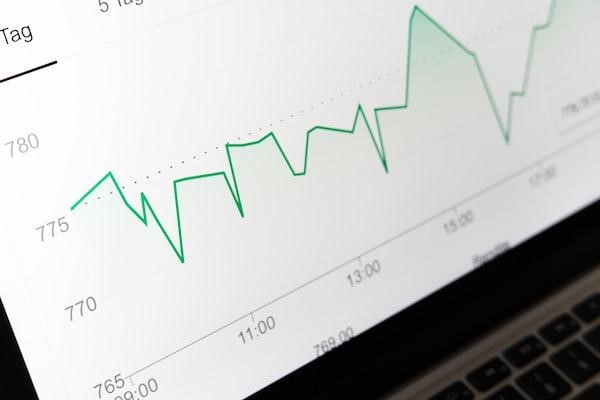A line graph is a type of graph that uses line segments to join data points. Line graphs are used to track changes over time or to compare different data sets. Keep reading to learn more about line graphs and how they are used.
The Line Graph
A line graph is a graphical representation of data in the form of points connected by straight lines. The data can be continuous or discrete and is typically displayed as a time series or percentage change. Line graphs are used to visualize trends, identify relationships between variables, and track changes over time.
The y-axis of a line graph usually represents the magnitude of the data, and the x-axis represents time or another variable. Points on a line graph are connected by straight lines that demonstrate the trend in the data. Line graphs can be used to compare two or more sets of data, identify changes over time, or show how one set of data corresponds with another set.
The History of the Line Graph
In 1801, William Playfair published a book called “The Commercial and Political Atlas.” In this book, he included the first line graph. This graph showed how the production of various commodities in England changed over time. In 1801, Joseph Fourier introduced the idea of using smooth curves instead of straight lines to connect the points on a line graph, which made it easier to identify trends in the data. This type of line graph is now known as a “Fourier curve.”
In 1859, John Snow used a line graph to track cholera cases in London and determine that cholera was being spread through contaminated water supplies. Snow’s line graph showed that there was an increase in cholera cases shortly after particular water pumps were turned on. This helped him identify the source of the outbreak and implement public health measures that eventually stopped the spread of cholera.
Since then, line graphs have been used to track all sorts of data, from stock prices to weather patterns. They are especially useful for tracking changes over time. There are several types of line graphs that vary depending on how the data is displayed. A simple line graph displays one type of data and connects all points on the graph with a single line. A multiple-line graph displays two or more types of data using different colors or symbols to differentiate between them. A stacked line graph stacks different types of data on top of each other so that changes in each type can be seen separately. And a clustered chart combines stacked and multiple line graphs into one chart for easier comparison.
Line Charts in Business Contexts

As discussed, line graphs are often used to track changes over time. They can be used to track sales, profits, or any other metric that changes over time. Line charts are effective because they are easy to read and provide a lot of information in a small amount of space. They are great for simplifying data sets in a few data points to demonstrate continuity and change.
The first example is a line chart showing the number of active users on Facebook over time. This chart is effective because it clearly shows the trend in active users over time. The second example is a line chart showing the stock price over time. This chart is effective because it clearly shows the trend in the stock price over time. The third example is a line chart showing the number of new customers acquired over time. This chart is effective because it clearly shows how customer acquisition has changed over time. Businesses can make informed decisions and improve processes and strategies based on information in a line graph. These types of data visualizations are good for demonstrating an overall trend.
A line graph is a great data analysis tool that uses a line to connect data points. It is used to track changes over time or to compare data points. Line charts are a very versatile tool that can be used to visualize a variety of data.


